Our verdict
- Top pick in best trail running shoes (2024)
Pros
- Responsive midsole
- Natural barefoot feeling ride
- Low to the ground and stable
- Doubles as a reliable hiking shoe
- Breathable and durable ripstop upper mesh
- Secure midfoot lockdown
- Accommodating toebox
- Generously padded and comfy
- Dries quickly
- Gaiter attachment ready
Cons
- Not so grippy in wet conditions
- Subpar outsole durability
Audience verdict
- Top 28% most popular running shoes
Comparison
The most similar running shoes compared
+ + Add a shoe | |||||
|---|---|---|---|---|---|
| Audience score | 81 Good! | 75 Bad! | 91 Superb! | 86 Good! | |
| Price | $140 | $75 | $140 | $150 | |
| Trail terrain | LightModerate | Light | LightModerate | LightModerate | |
| Shock absorption | - | Low | Low | Moderate | |
| Energy return | - | Low | Moderate | Moderate | |
| Arch support | Neutral | Neutral | Neutral | Neutral | |
| Weight lab Weight brand | 10.2 oz / 288g 10.7 oz / 303g | 10.3 oz / 291g 10.1 oz / 285g | 10.9 oz / 309g 10.4 oz / 295g | 10.1 oz / 286g 9.2 oz / 260g | |
| Drop lab Drop brand | 1.4 mm 0.0 mm | 2.5 mm 6.0 mm | 0.0 mm 0.0 mm | 7.2 mm 6.0 mm | |
| Strike pattern | Mid/forefoot | Mid/forefoot | Mid/forefoot | Mid/forefoot | |
| Size | True to size | True to size | True to size | True to size | |
| Midsole softness | Balanced | Balanced | Balanced | Soft | |
| Difference in midsole softness in cold | Small | Small | Normal | Big | |
| Toebox durability | Good | Decent | Decent | Bad | |
| Heel padding durability | Decent | Decent | Decent | - | |
| Outsole durability | Decent | Good | Good | - | |
| Breathability | Moderate | Moderate | Warm | Moderate | |
| Width / fit | Medium | Medium | Wide | Narrow | |
| Toebox width | Wide | Medium | Wide | Narrow | |
| Stiffness | Stiff | Moderate | Moderate | Moderate | |
| Torsional rigidity | Flexible | Flexible | Moderate | Flexible | |
| Heel counter stiffness | Flexible | Moderate | Flexible | Moderate | |
| Lug depth | 3.0 mm | 2.7 mm | 3.8 mm | 2.8 mm | |
| Heel stack lab Heel stack brand | 22.7 mm 25.0 mm | 22.7 mm 27.0 mm | 23.3 mm 25.0 mm | 30.6 mm 32.0 mm | |
| Forefoot lab Forefoot brand | 21.3 mm 25.0 mm | 20.2 mm 21.0 mm | 23.3 mm 25.0 mm | 23.4 mm 26.0 mm | |
| Widths available | NormalWide | NormalWideX-Wide | NormalWide | Normal | |
| Season | All seasons | All seasons | All seasons | All seasons | |
| Removable insole | ✓ | ✓ | ✓ | ✗ | |
| Orthotic friendly | ✓ | ✓ | ✓ | ✗ | |
| Ranking | #545 Bottom 16% | #353 Bottom 4% | #30 Top 9% | #176 Top 48% | |
| Popularity | #179 Top 28% | #189 Bottom 48% | #42 Top 12% | #182 Top 50% |
Who should buy
We recommend the Altra Lone Peak 8 as an excellent choice for:
- Zero-drop enthusiasts looking for a comfy and versatile trail runner that can tackle a variety of surfaces
- Runners who prefer flexible minimalist shoes that feel like an extension of the foot
- Adventurous spirits who need a stable and reliable companion for hiking or backpacking trips
- Fans of Altra's signature foot-shaped toebox that boasts plenty of room for natural toe-splay
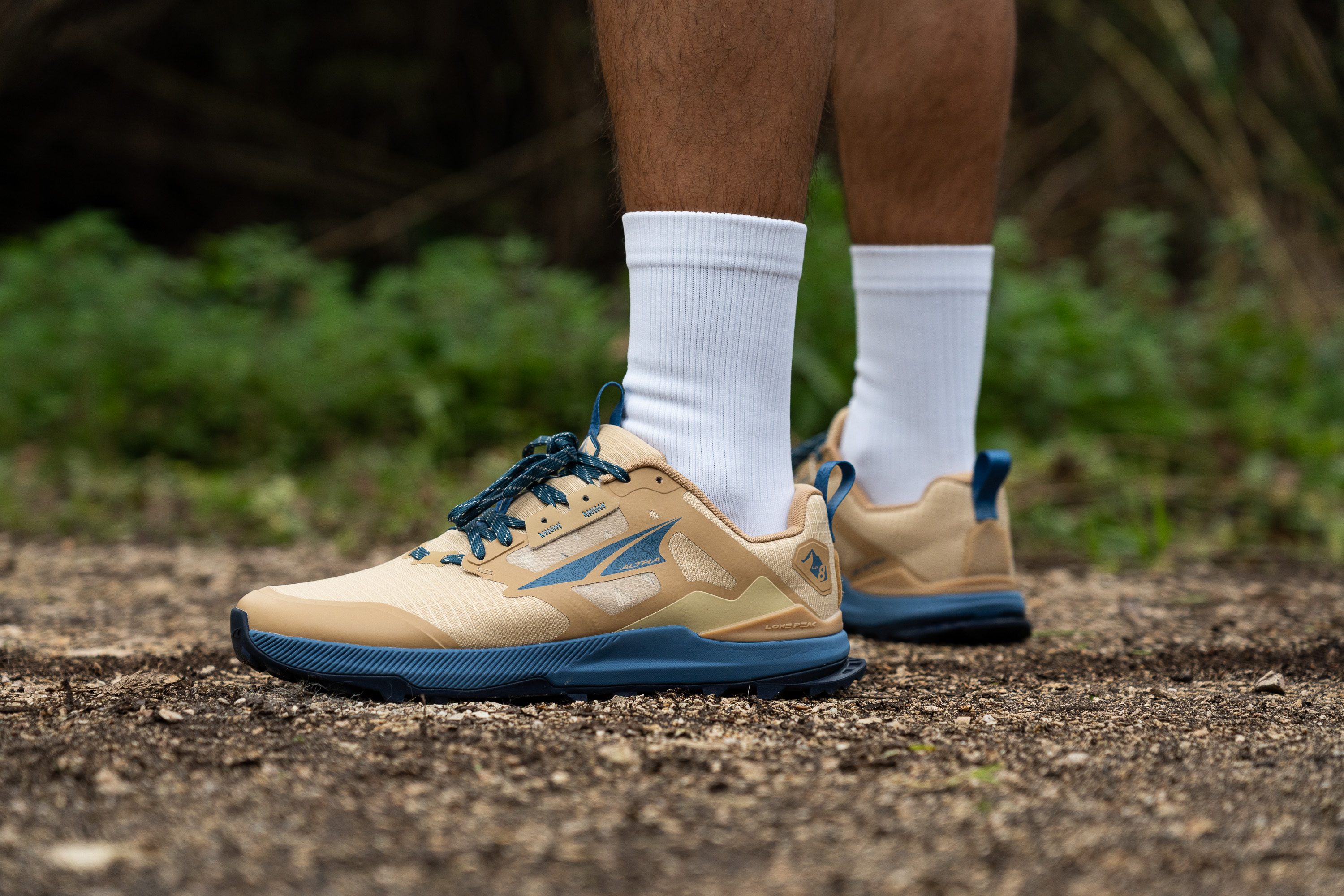
Who should NOT buy
While the Max-Trac outsole is grippy enough when conditions are dry, we didn't feel nearly as sure-footed when encountering wet or muddy trails during our test runs. It also didn't dare too well against our Dremel in our wear and tear test. The Altra Olympus 5, on the other hand, uses a Vibram outsole that has no issues with slick surfaces and is more durable to boot, albeit on a higher stack.
The durable yet airy upper mesh may be well-suited for warmer days but will leave us with icy feet during more frosty winter sessions despite its promising performance in our freezer tests. The Salomon Speedcross 6 is a much more insulated alternative that keeps our feet warm and can slosh through muddy trails with ease.
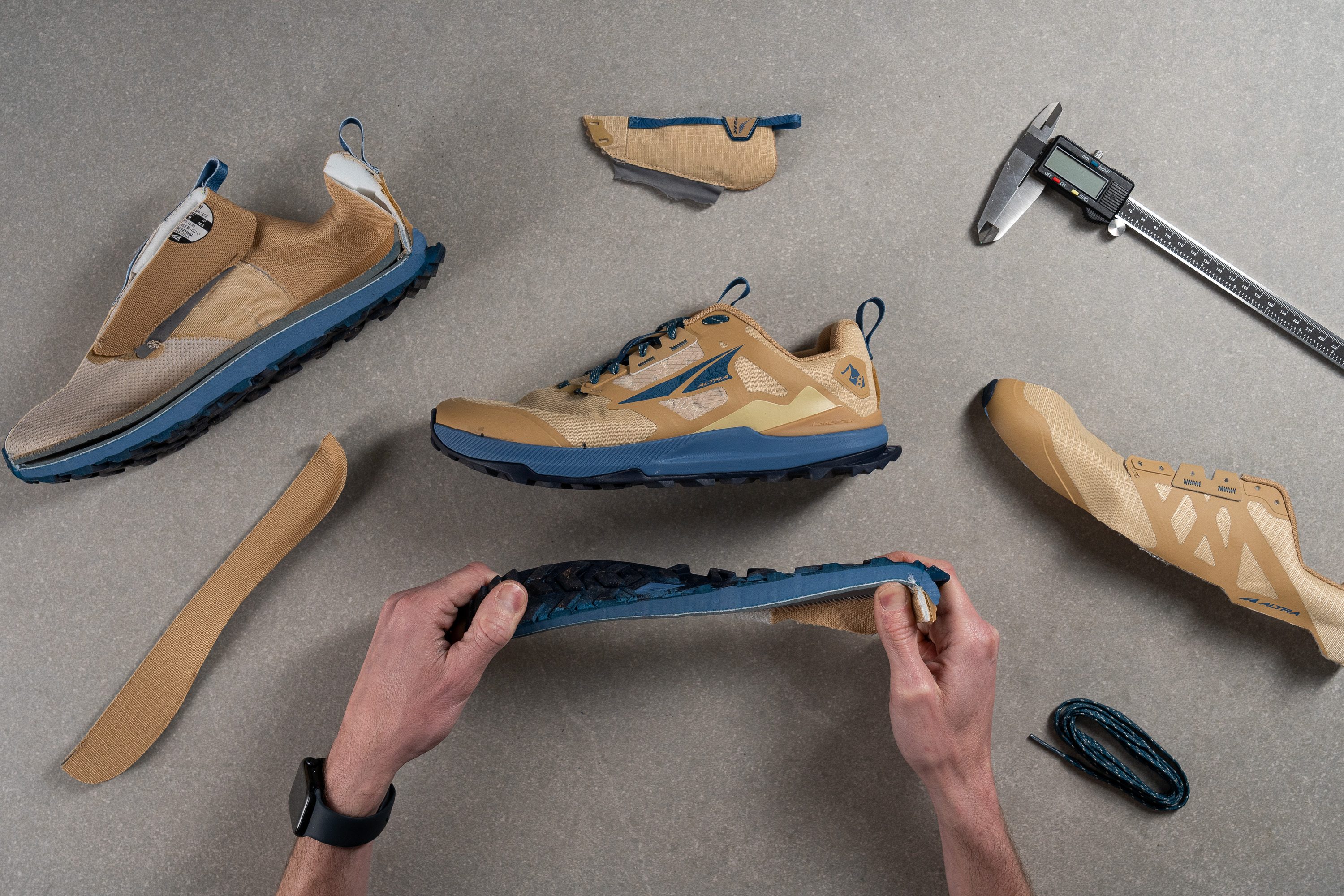
Cushioning
Heel stack
Despite being marketed as sporting a 25 mm stack, we found that it is, in reality, a little shorter at 22.7 mm thick according to our caliper measurements. This is shorter than our current lab average but still leaves us with enough foam underfoot to protect us from rocks, tree roots, and other harsh surfaces during testing.
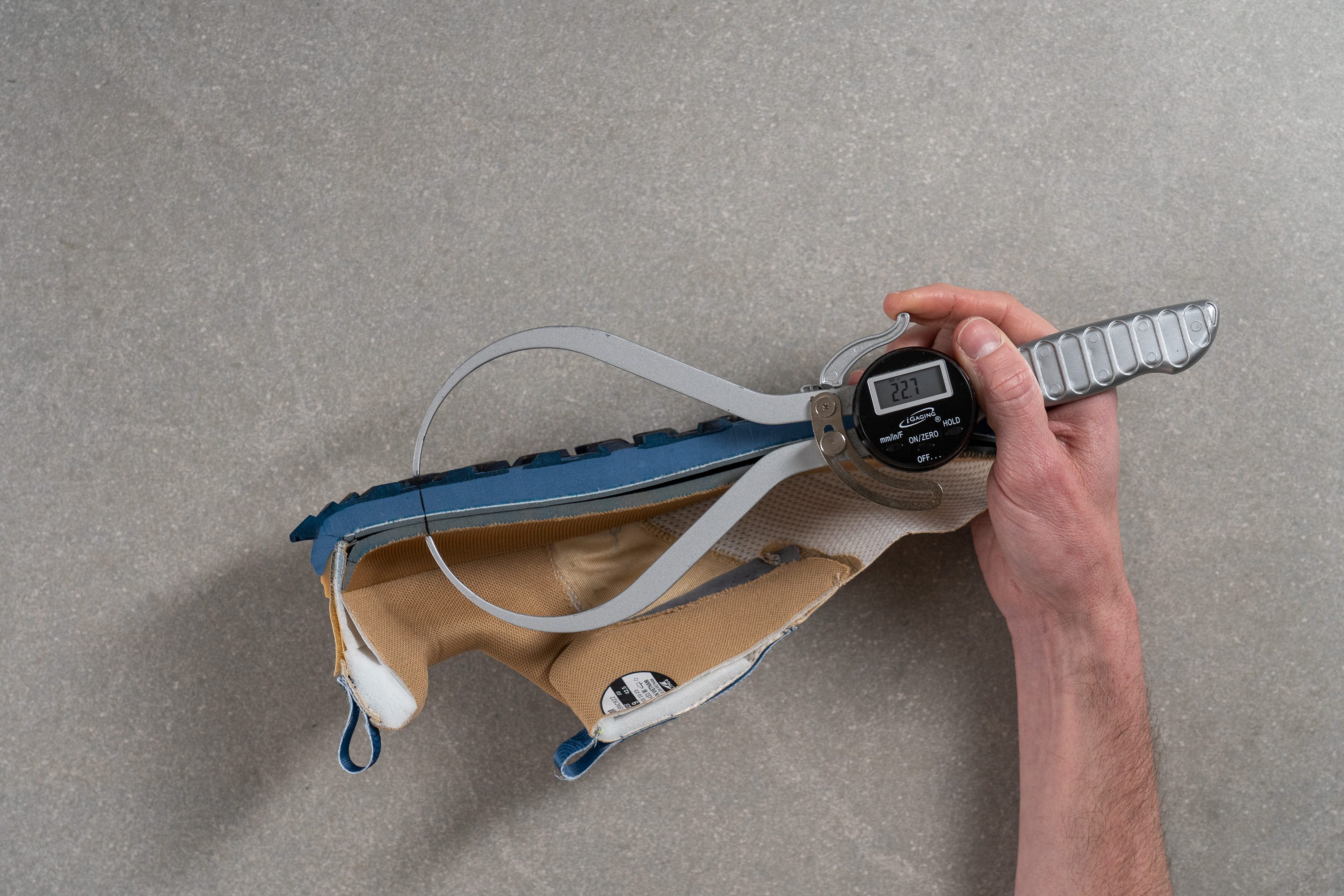
While this means that we were able to cover long distances while testing the Lone Peak 8, the repeated impact with the ground becomes quite apparent after about 15 miles. As such, we recommend checking out Altra Olympus 5 as a mile-gobbling alternative, especially for runners unaccustomed to using minimalist trail shoes.
| Lone Peak 8 | 22.7 mm |
| Average | 32.6 mm |
Forefoot stack
While we expect the forefoot stack measurement to match the heel on a zero-drop shoe, we found another slight discrepancy with the spec figures. Wielding our trusty caliper once more, we found that it's actually 21.3 mm thick which is also shy of our current lab average.

This low profile at the forefoot gives us a great sense of the ground below for intuitive maneuvering and toe-offs whether we're traipsing along on tame or tricky trails.
| Lone Peak 8 | 21.3 mm |
| Average | 25.1 mm |
Drop
The difference between our stack measurements leaves the shoe with a 1.4 mm heel drop. This kind of discrepancy isn't new to us here in the lab, as this article explores, though this offset is so slight that the Lone Peak 8 still feels like a zero-drop shoe underfoot.

While the benefits of such shoes are hotly contested, there's no doubt that they put more pressure on our calves and ankles. As such, runners with injuries or issues with their lower legs should consider a higher-drop alternative like the Nike Wildhorse 8 which also boasts a roomy toebox.
| Lone Peak 8 | 1.4 mm |
| Average | 7.6 mm |
Midsole softness
Pressing our durometer against the Lone Peak 8's EGO midsole foam yields a rather firm reading of 29.3 HA.
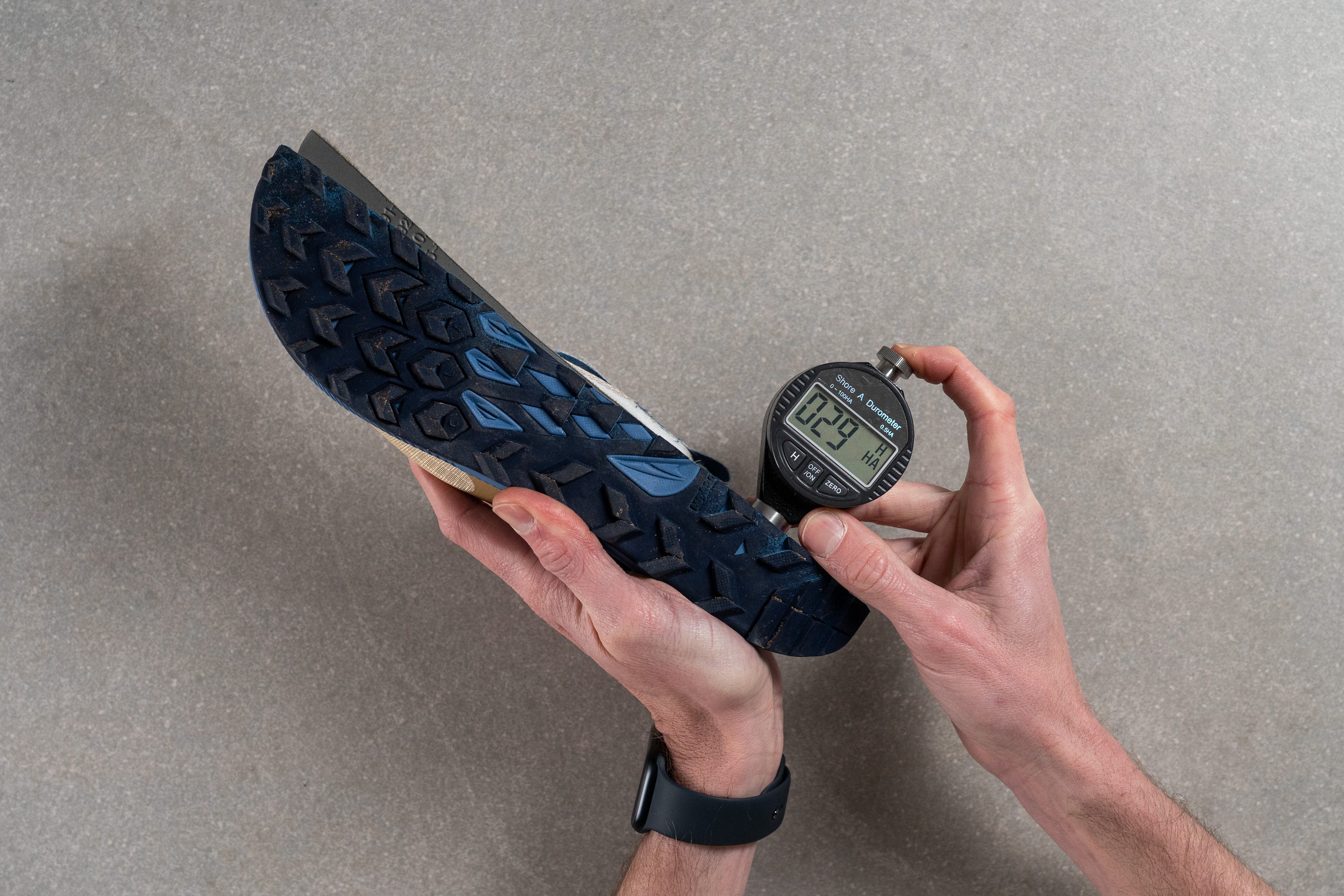
While this may not sound appealing at first, it's actually quite beneficial for shoes with lower stacks to use firmer foams to avoid bottoming out as the midsole compresses under our weight. As such, the cushioning does a good job of dampening the impact of our landings while also protecting us from any underfoot hazards we come across.
Furthermore, the EGO foam has a nice rebound to it which translates to an energetic toe-off that feels quite natural and snappy.
This level of firmness in the midsole is also good for hiking as it means we can schlep heavy packs without worrying about feeling too squishy or wobbly as we traverse the trails.
| Lone Peak 8 | 29.3 HA |
| Average | 21.9 HA |
Size and fit
Size
Altra Lone Peak 8 fits true to size (62 votes).
Width / Fit
Using our caliper, we measured the Lone Peak 8 to be 97.9 mm wide.
With its wider-than-average measurement, we proved that it comfortably accommodates various foot shapes while maintaining a secure, locked-in fit. And for runners with particularly broad feet, a wide option is available, offering even more internal space.
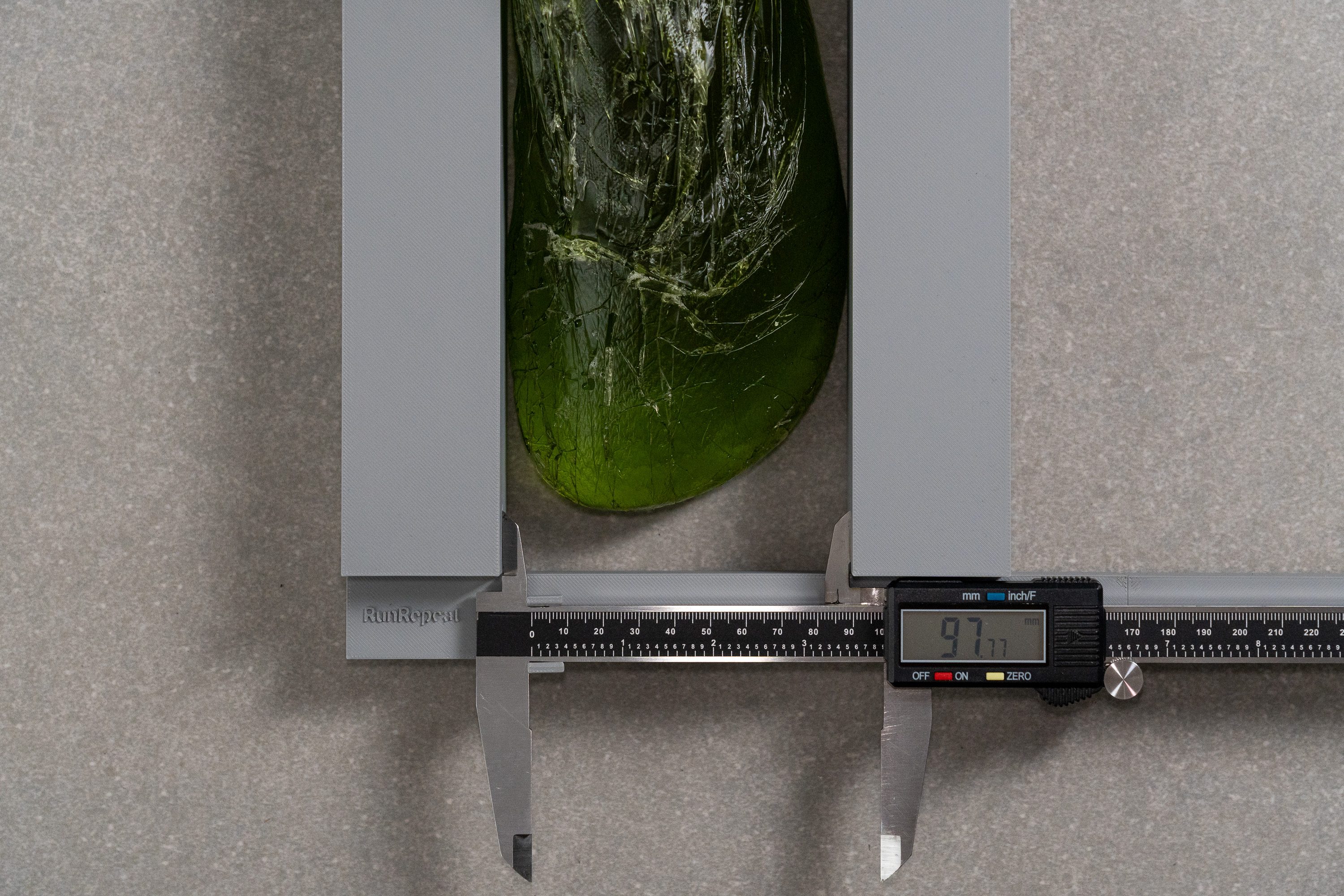
| Lone Peak 8 | 97.8 mm |
| Average | 95.6 mm |
Toebox width
In classic Altra style, the toebox barely tapers toward the big toe, measuring an impressive 84.2 mm wide at the big toe, according to our caliper—providing ample room even for those with pizza-shaped feet!

| Lone Peak 8 | 84.2 mm |
| Average | 74.6 mm |
Toebox height
The Lone Peak 8 offers exceptional clearance with a generous height of 28.3 mm, making it a perfect choice for runners with higher-volume feet seeking extra space and comfort.
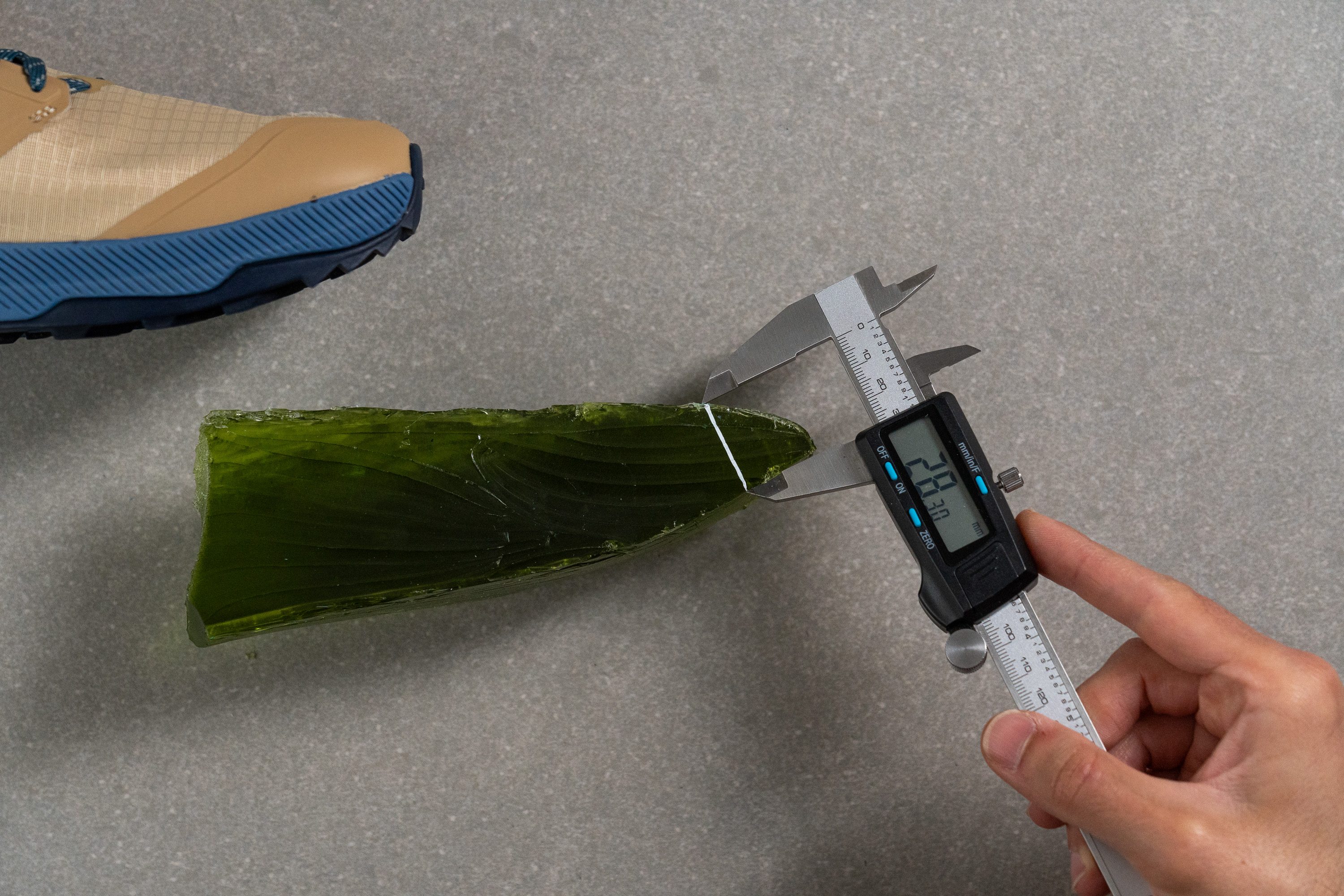
| Lone Peak 8 | 28.3 mm |
| Average | 27.0 mm |
Traction / Grip
Lug depth
The Lone Peak 8's claw-like, chevron-shaped lugs are slightly shorter than average at 3 mm thick according to our caliper measurements.
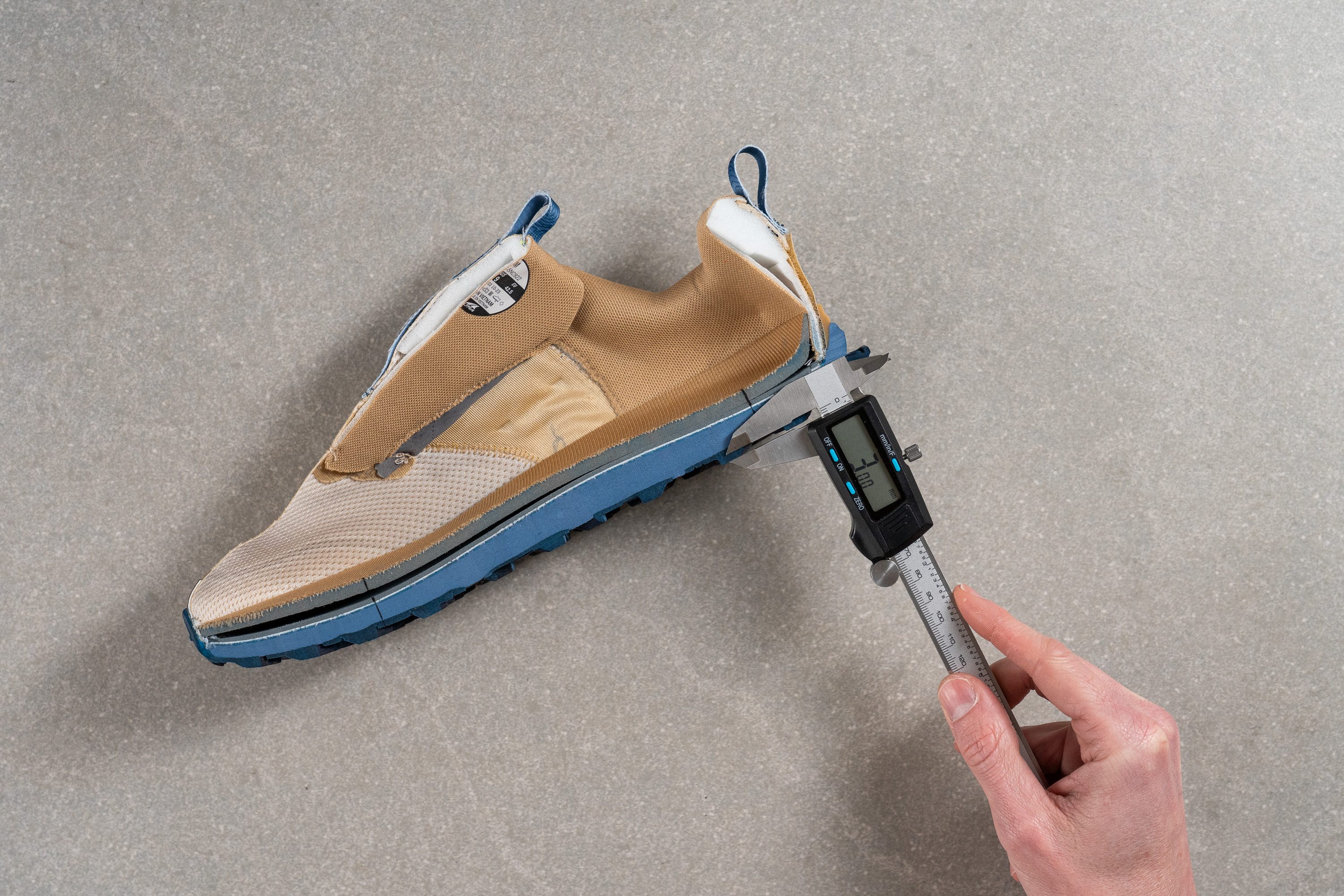
These lugs form a multidirectional tread pattern that follows our foot's bone structure, contributing to the shoe's aforementioned flexibility. More importantly, it provides us with excellent traction over hard and loose-packed trails in dry conditions.
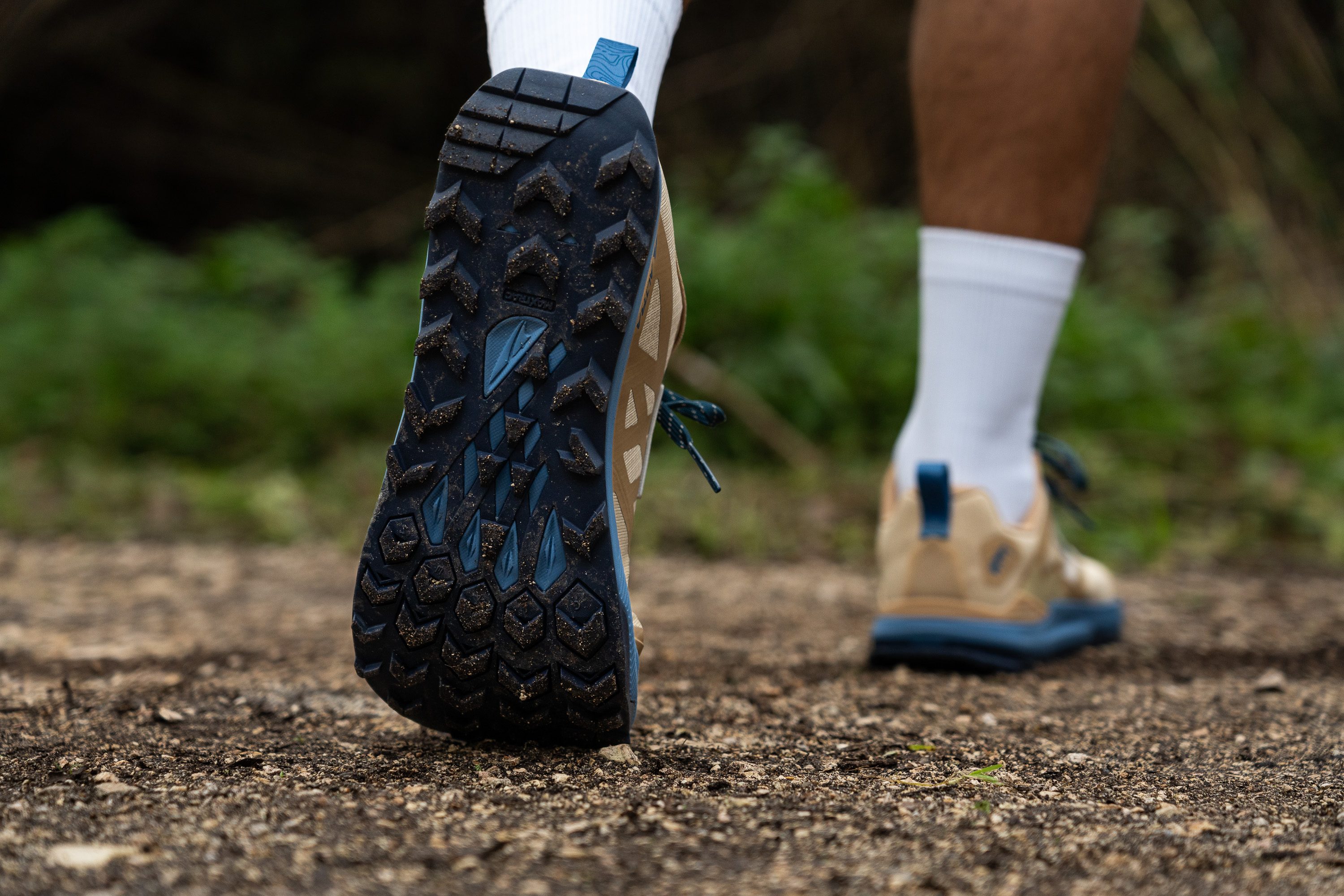
That final caveat is important as we didn't feel nearly as surefooted on wet or muddy trails where a shoe like the Salomon Speedcross 6 shines thanks to its more grippy and aggressive lugs.
| Lone Peak 8 | 3.0 mm |
| Average | 3.5 mm |
Flexibility / Stiffness
We secured the Lone Peak 8 to our workbench and found that only 21.3N of force is needed to bend the shoe to 90 degrees.
This is significantly more flexible than the average trail shoe which translates to a more comfortable ride as the shoe doesn't restrict the natural flexion of our foot as we run or walk around.
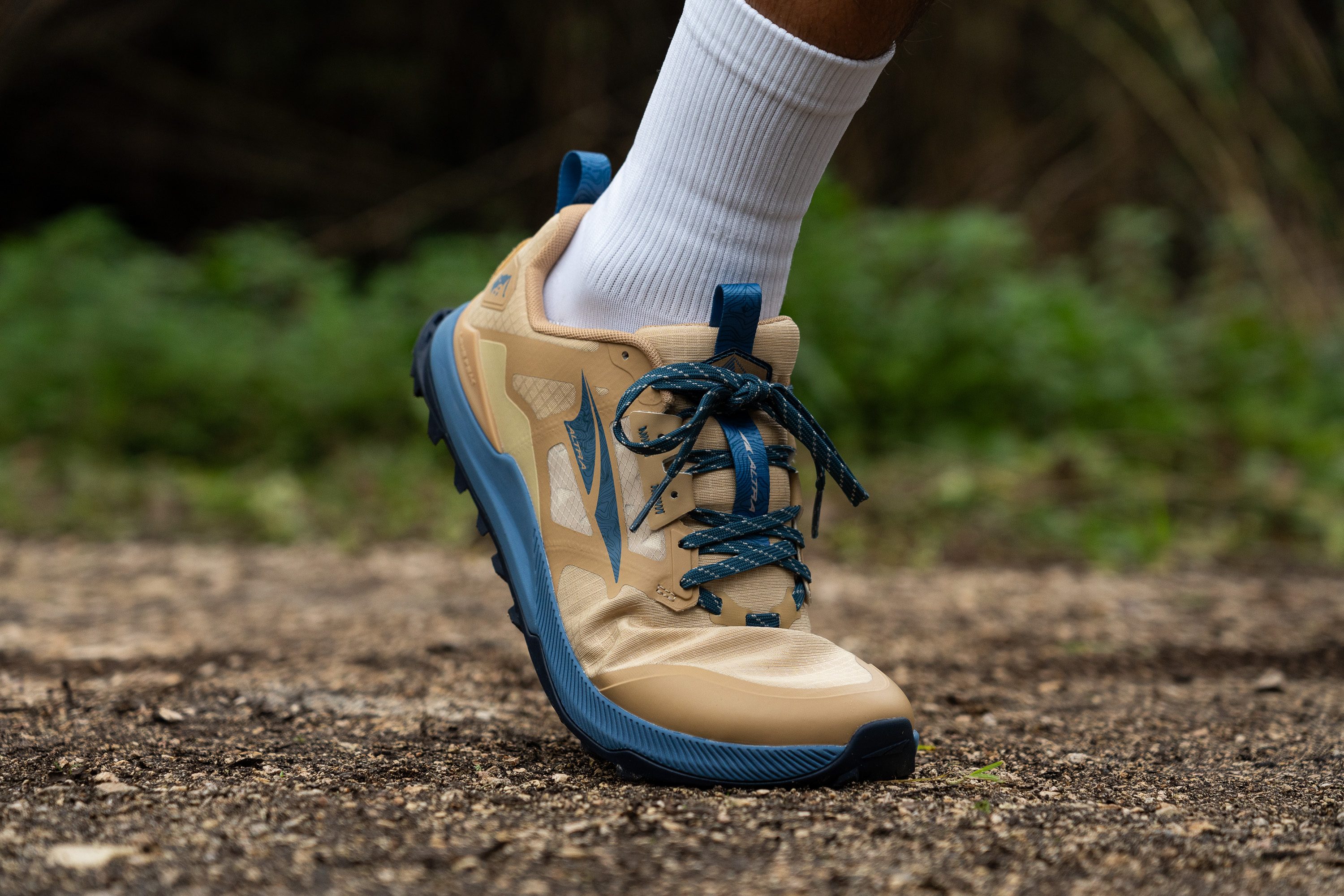
This test follows an older methodology, which is why you don't see recently tested shoes in the chart. Results from different methodologies can not be compared.
| Lone Peak 8 | 21.3N |
| Average | 27.1N |
Stiffness in cold (%)
We also repeated the flex test after leaving the shoe in our freezer for twenty minutes and found that it only became 14.2% stiffer when exposed to the cold. This is a much more consistent result than average and means that the Lone Peak 8 is barely affected by the cold. In fact, it's still more flexible than the average trail shoe at room temperature! As such, the shoe should feel just as natural and forgiving on the foot all year round.
That being said, we recommend pairing it with some cozy socks when going for a frosty winter run as the breathability of the upper mesh will let the icy air cut right through to our feet.
| Lone Peak 8 | 14% |
| Average | 32% |
Weight
Despite its low stack, the Lone Peak 8 is about as heavy as the average trail shoe at 10.2 oz (288g). While this isn't light enough to describe it as "barely there", it certainly isn't so heavy as to feel burdensome or detract from the shoe's natural ride. What's more, we had no problem occasionally pushing the pace or going the distance while testing the Lone Peak 8.
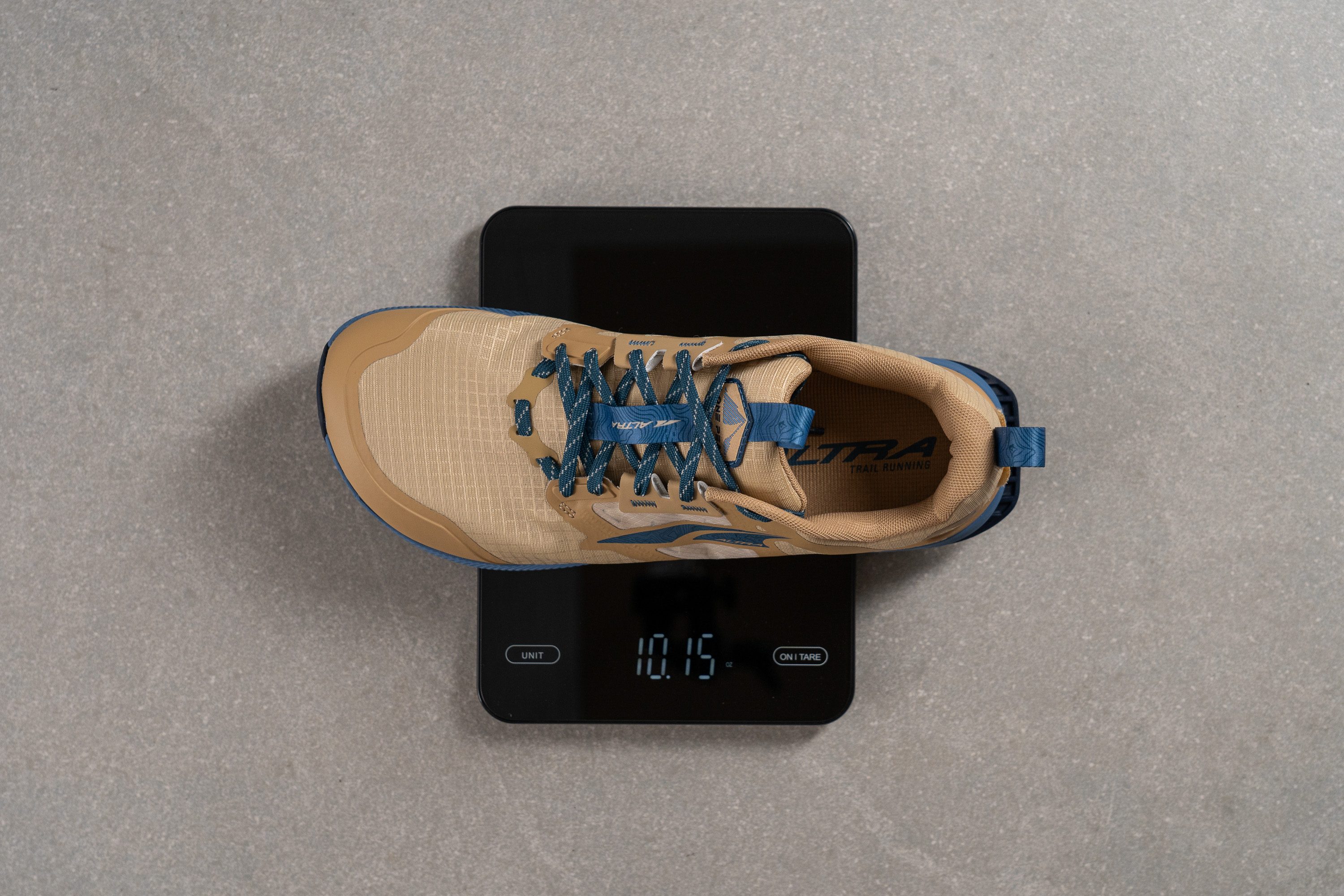
| Lone Peak 8 | 10.2 oz (288g) |
| Average | 10.2 oz (289g) |
Breathability
We used a smoke machine to pump the Lone Peak 8 full of smoke to get a visual idea of how breathable it is. Despite a slow start, the smoke is eventually able to filter through the upper to form a haze that emanates evenly throughout the shoe. This leads us to give the Lone Peak 8 a breathability score of 4 out of 5, thus making it a nice and breezy companion for warm summer days.
The well-ventilated nature of the shoe is further illuminated when inspecting a cross-section of its upper over a backlight. As we can clearly see, only the sections with overlays are opaque enough to block out the light while it easily shines through the rest of the mesh.
The ripstop upper mesh is the most notable update from the shoe's previous iteration, the quality of which is difficult to question when looking at it under the microscope. The braids are tightly and uniformly woven to form an incredibly symmetrical pattern with lots of little pores that promote airflow throughout the shoe. Not only does this help heat escape, but it also means that the shoe doesn't trap in smells and dries up quite quickly when wet.

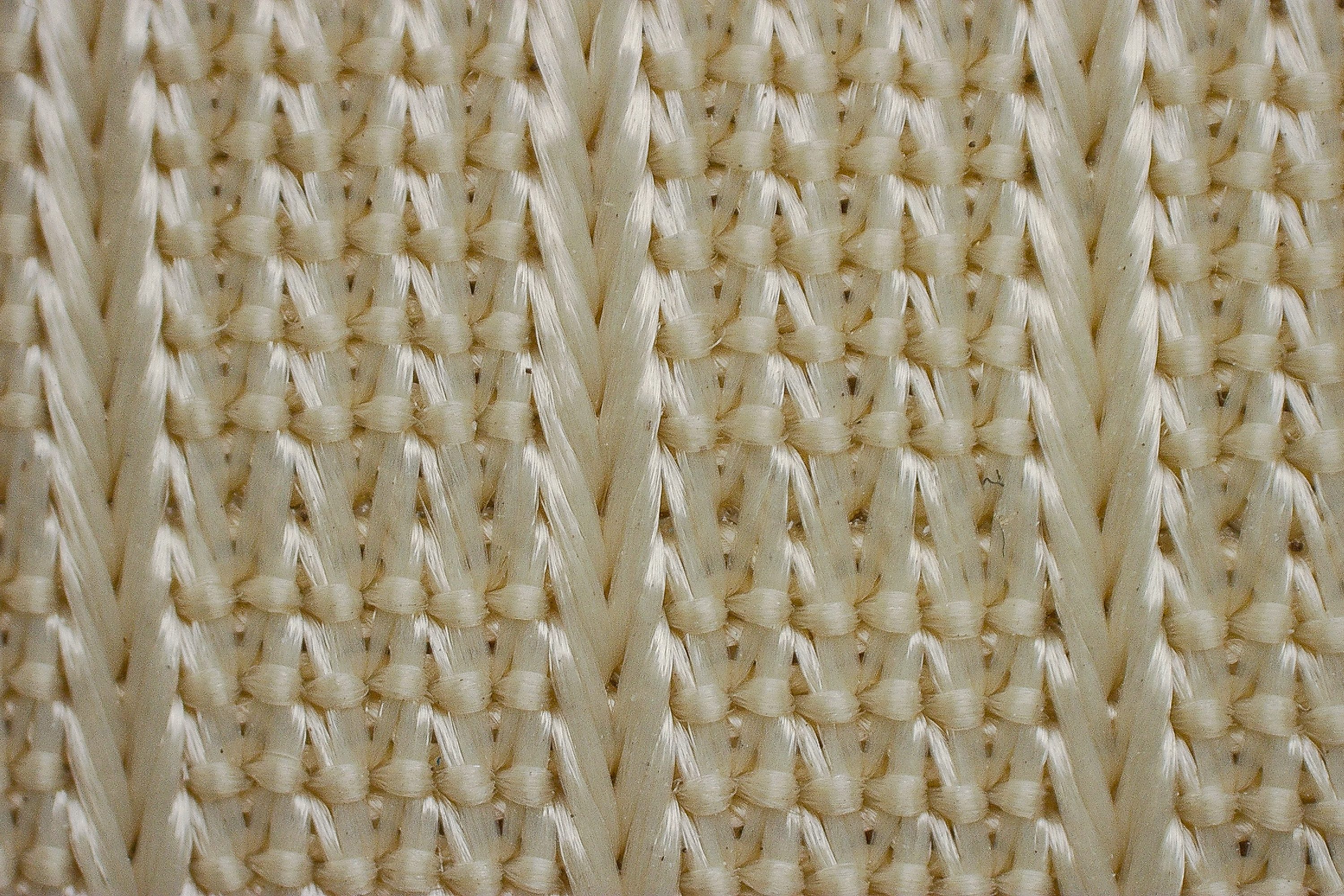
| Lone Peak 8 | 4 |
| Average | 3.2 |
Stability
Lateral stability test
As a shoe with a relatively low stack, it should come as no surprise that the Lone Peak 8 feels extremely well-planted and stable despite some lateral play as we shift our weight around in it. The only stabilizing feature to speak of are the raised sidewalls on the lateral and medial sides of the midsole. This serves to nestle our foot within the rather than feeling like we're perched above the foam.
Torsional rigidity
We were met with little resistance as we bent and twisted the shoe in our hands, leading us to give the Lone Peak 8 a torsional rigidity score of 2 out of 5 on our subjective scale. This factors greatly into how easy and comfy the shoe feels underfoot as it doesn't inhibit the natural contortions of our foot throughout our stride. Furthermore, it allows us to scramble up steeper surfaces and do some light climbing with relative ease while out on more adventurous treks
| Lone Peak 8 | 2 |
| Average | 3.6 |
Heel counter stiffness
The heel counter is also quite pliable, earning another 2 out of 5 in our manual assessment. This is also more of a comfort feature than a stability one as it doesn't do much to restrict the natural lateral movements of our heel while still locking it into the shoe thanks to the generous padding back there.
| Lone Peak 8 | 2 |
| Average | 3 |
Midsole width - forefoot
The Lone Peak 8's midsole is 108.3 mm wide at the forefoot according to our caliper measurements. While this is a little shy of our current lab average, we still found that we had more than enough of a platform underfoot to ensure stable landings and toe-offs while testing the shoe.
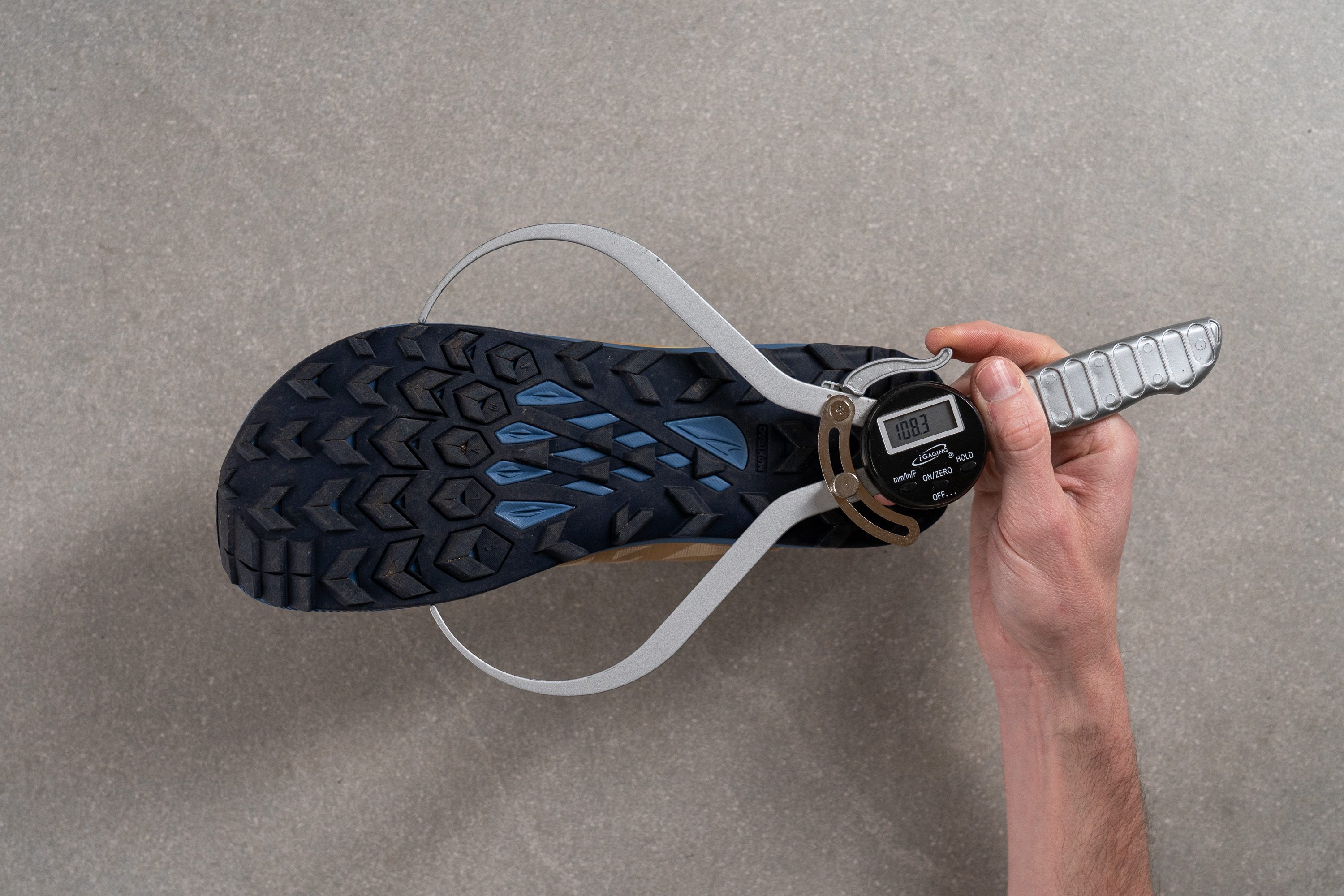
| Lone Peak 8 | 108.3 mm |
| Average | 112.8 mm |
Midsole width - heel
Zero-drop shoes generally aren't targeted at heel-striking runners, so there's no point having too much material weighing us down at the rearfoot. As such, it stands to reason that the Lone Peak 8's midsole is significantly narrower than average at the heel, measuring only 80.9 mm wide.

| Lone Peak 8 | 80.9 mm |
| Average | 89.8 mm |
Durability
Toebox durability
To put the ripstop mesh upper's ability to... stop rips, we fired up our Dremel and pressed it against an unreinforced portion of the Lone Peak 8's toebox. After four seconds of extreme wear and tear, we were pleased to find that the material had lived up to its name.
Not only did it prevent our tool from piercing all the way through the mesh, but it effectively stopped the tear from spreading beyond the point of impact. With the toebox mostly uncompromised in the aftermath of this test, we give the Lone Peak 8 a respectable 4 out of 5 for toebox durability. This is all the more encouraging considering the added protection of the toe bumper which further shields us from bumps and scrapes.
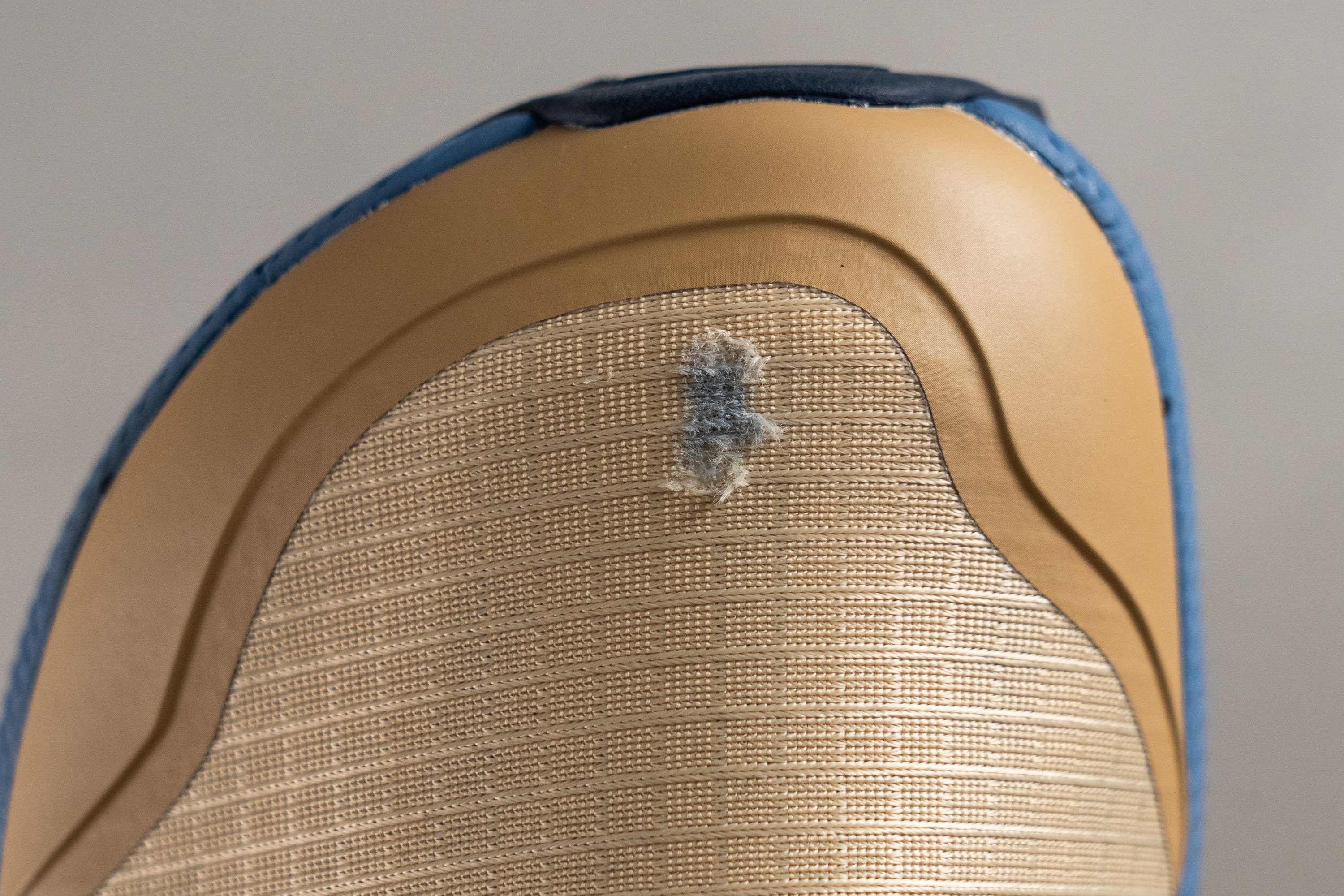
| Lone Peak 8 | 4 |
| Average | 3.1 |
Heel padding durability
The heel collar didn't fare as well in its face-off against our Dremel. The tool made quick work of the lining and was eating away at the soft padding within in no time.
By the time we powered down, the shoe was left with a rather large crater in the heel collar which had hemorrhaged a fair amount of padding. This leads us to give the Lone Peak 8 a score of 2 out of 5 in this assessment. While this isn't a big deal when it comes to normal use, we don't recommend going sockless in this shoe too often as the relentless friction of sweaty heel rubs will likely exacerbate wear and tear.
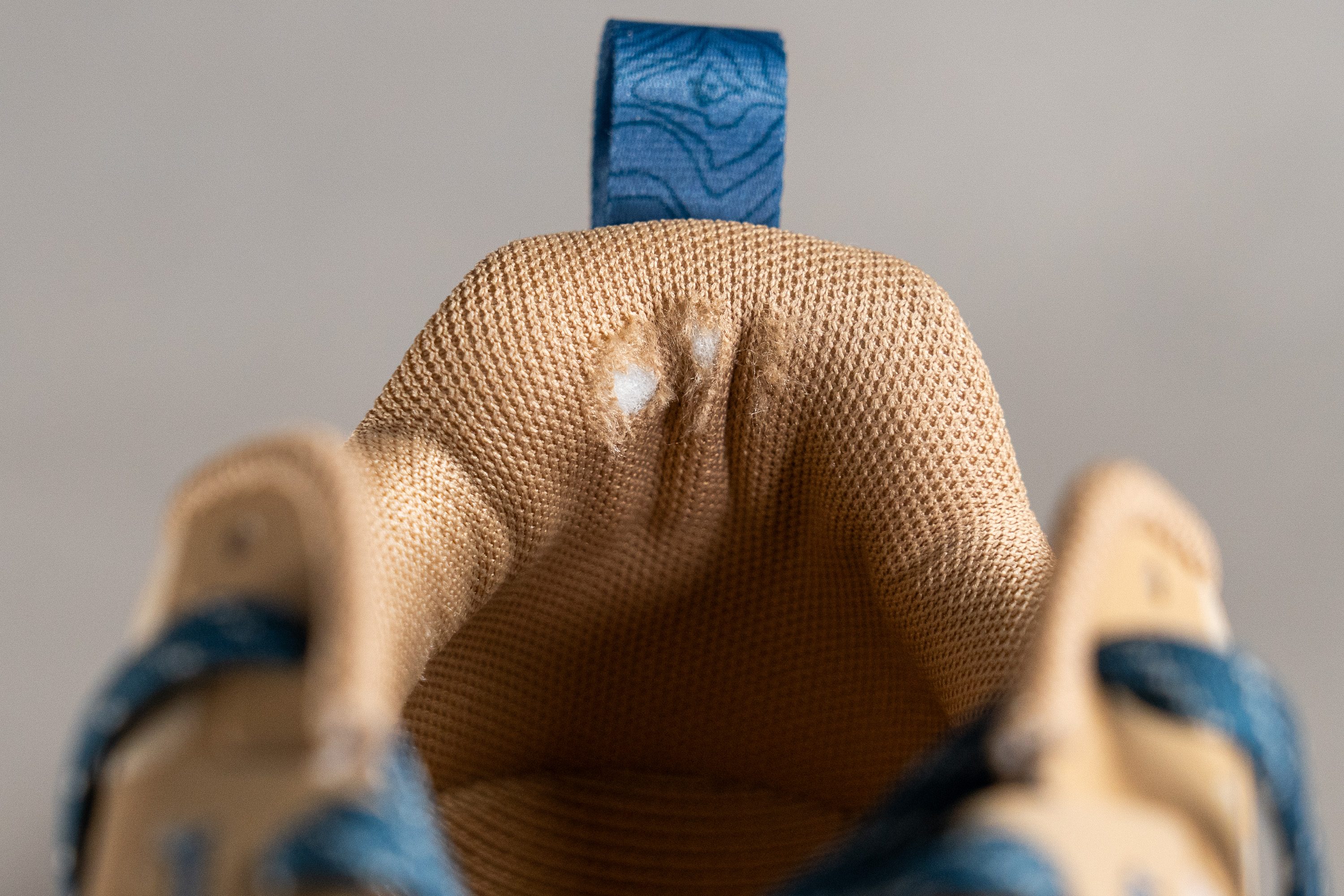
| Lone Peak 8 | 2 |
| Average | 3 |
Outsole hardness
The Lone Peak 8 features Altra's proprietary Max-Trac rubber compound in the outsole which gives us a slightly softer-than-average durometer reading of 80.1 HC. On the one hand, this is encouraging in terms of traction as a softer rubber is better able to bite into and grip surfaces. On the other, however, it does usually come at the expense of strength; an assumption that will be tested in the next section.
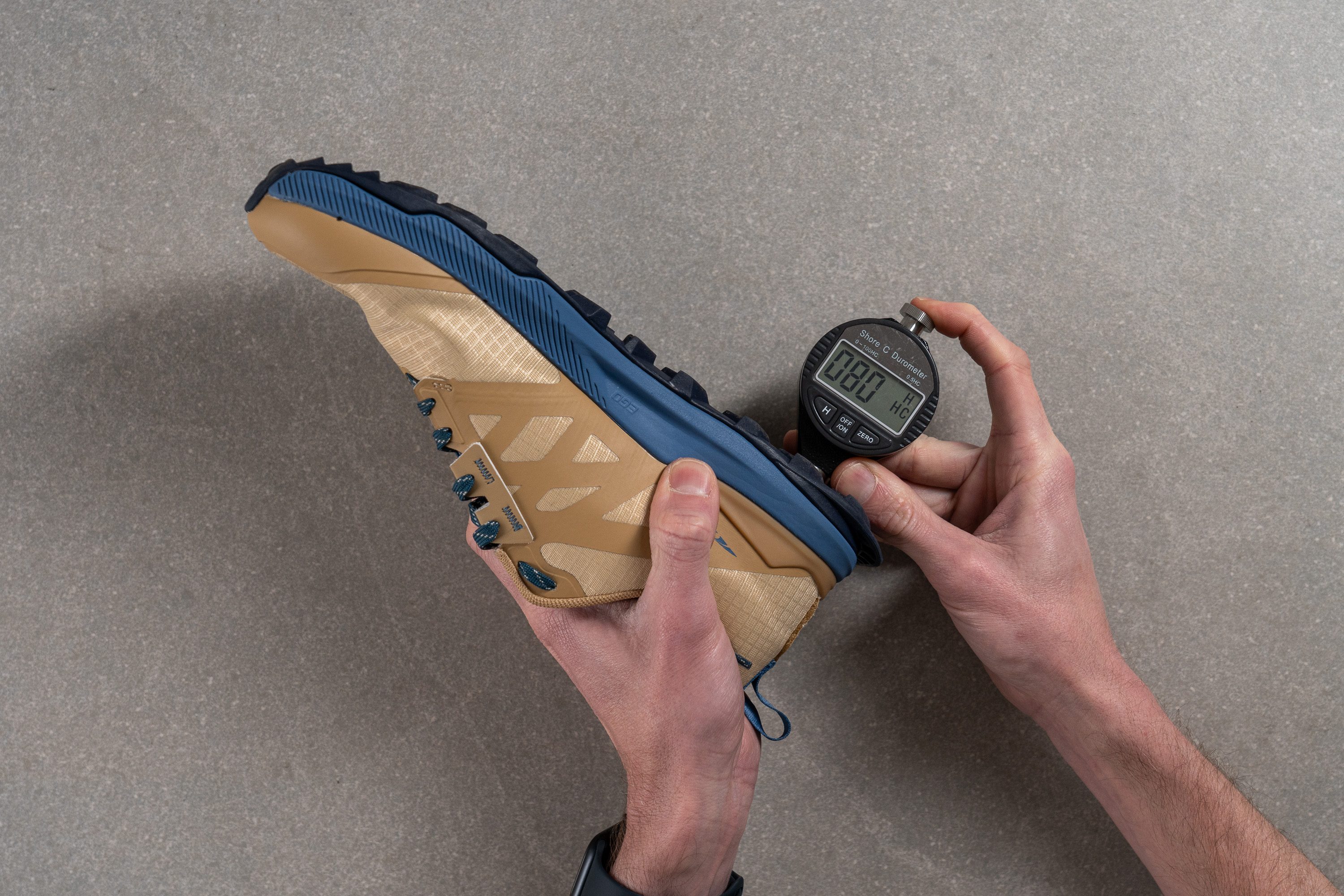
| Lone Peak 8 | 80.1 HC |
| Average | 85.8 HC |
Outsole durability
Now spinning at 10K RPM, we pressed our durometer against one of the Lone Peak 8's outsole lugs for twenty-two seconds of relentless grinding.
Once all was said and done and the blue dust had settled, we used a tire tread gauge to measure the indentation left behind in the aftermath. With a whopping 1.8 mm of material lost, the shoe's Max-Trac rubber proves to be significantly less durable than average. This is easily the weakest point of an otherwise excellent shoe, and we hope that Altra considers furnishing the next iteration of the Lone Peak with a hardier Vibram outsole as found in some of their other models.
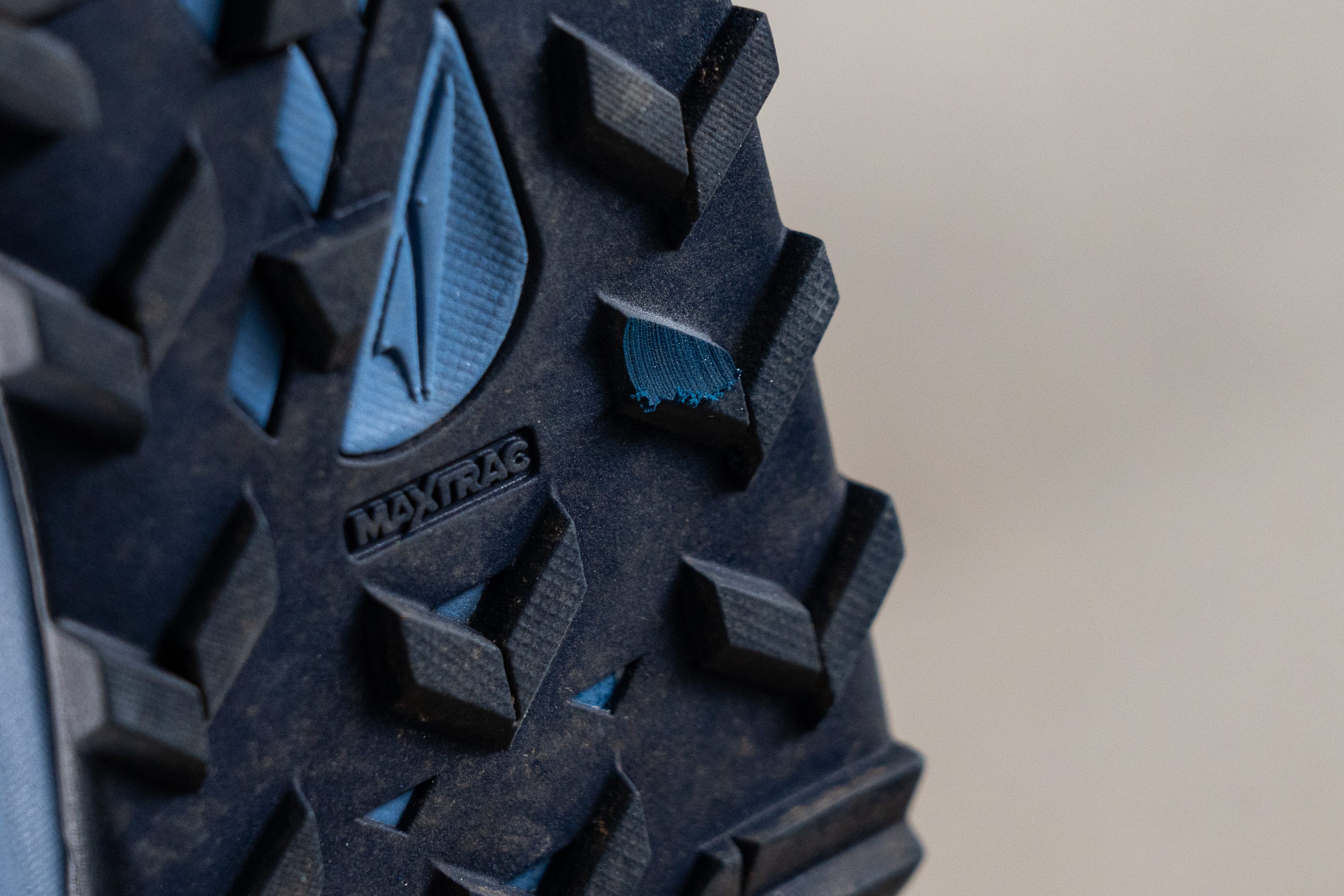
| Lone Peak 8 | 1.8 mm |
| Average | 0.9 mm |
Outsole thickness
At 2 mm thick according to our caliper measurements, the Lone Peak 8's outsole is within range of our current lab average. This, in combination with the lugs, is a fair amount of protective rubber to have underfoot without weighing the shoe down too much.
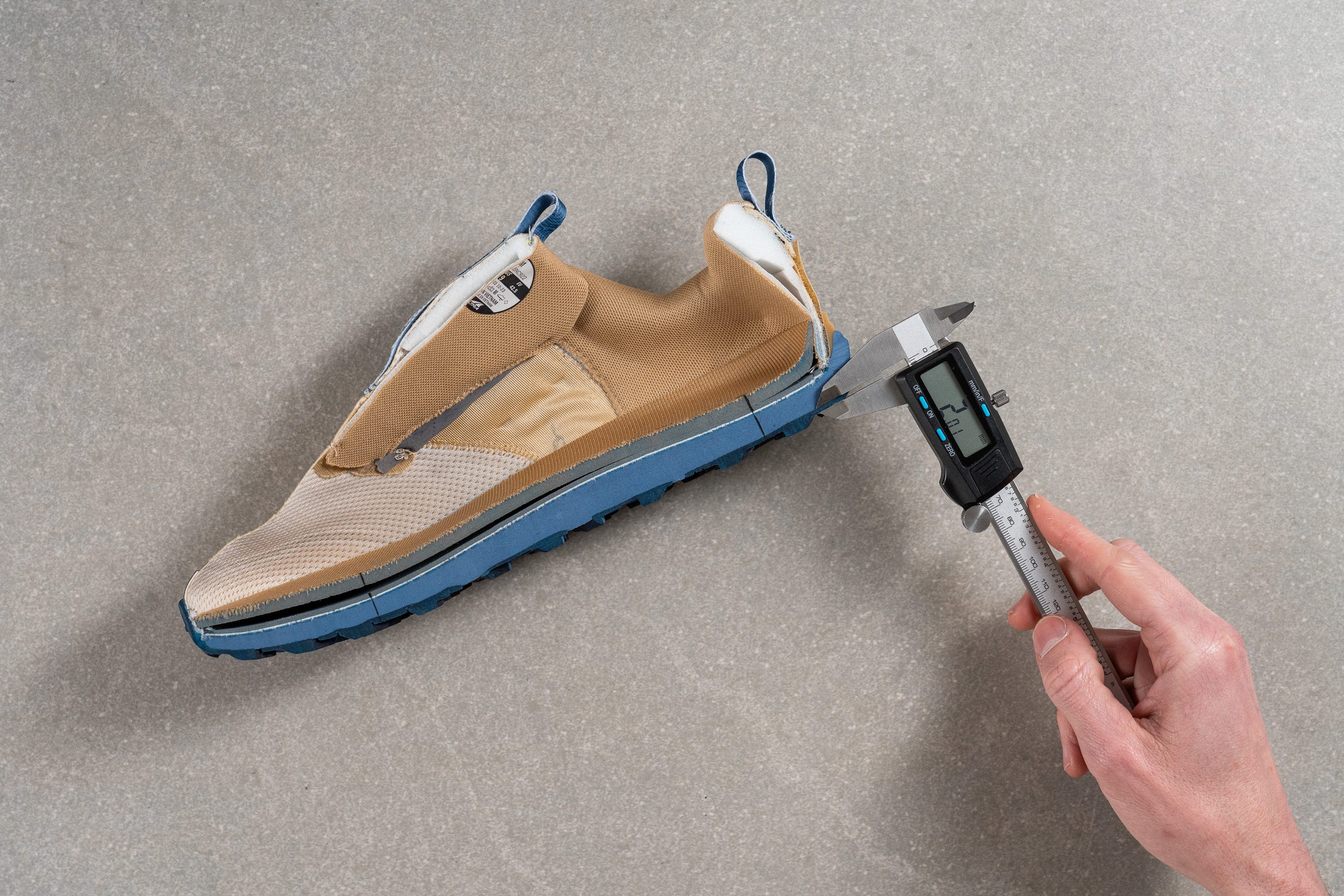
| Lone Peak 8 | 2.0 mm |
| Average | 2.2 mm |
Misc
Insole thickness
The Lone Peak 8's default insole is slightly thicker than average at 5.5 mm thick according to our caliper measurements. This leaves us with a nice and cushy footbed to sink into during landings that offsets the relatively firm midsole foam.
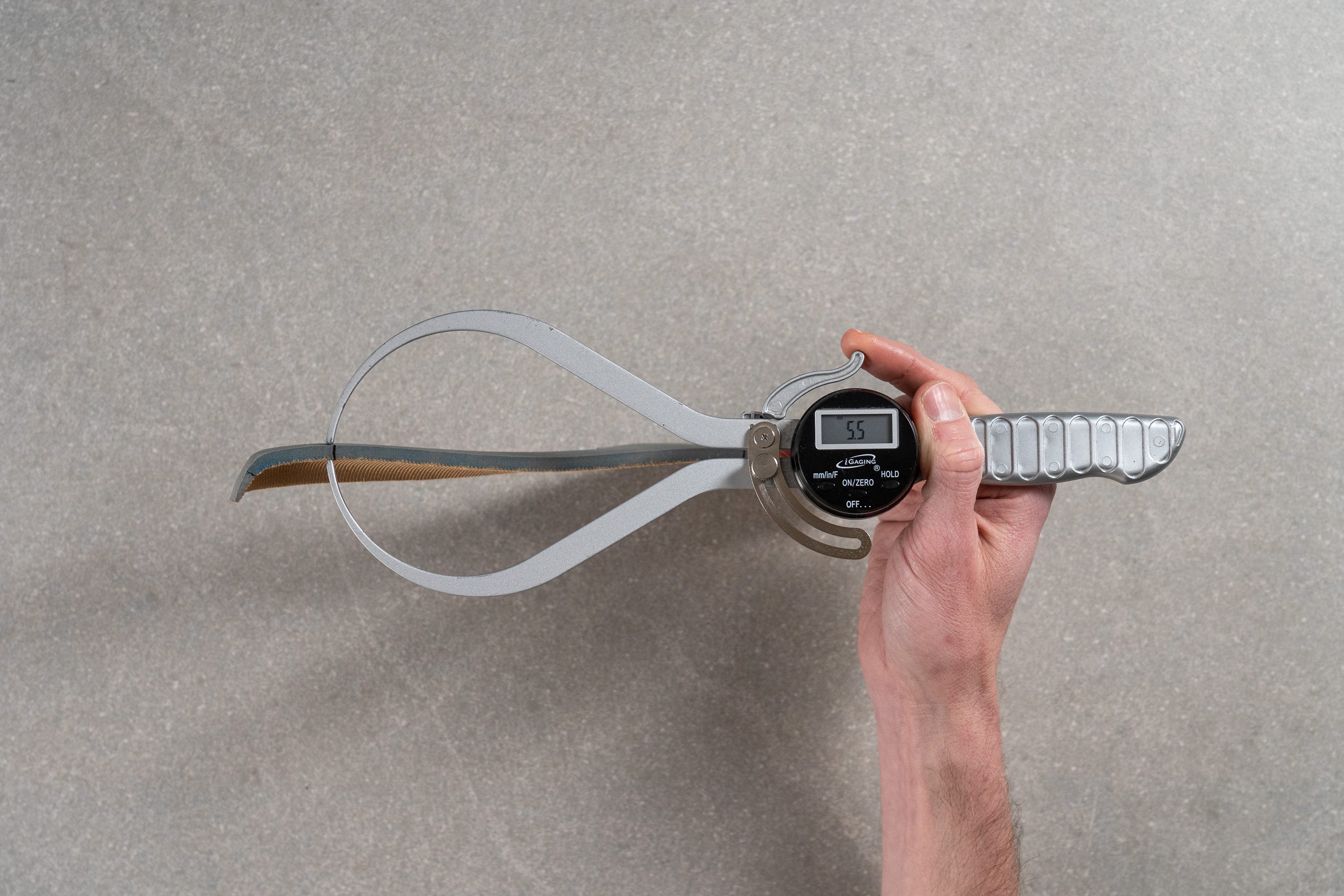
| Lone Peak 8 | 5.5 mm |
| Average | 4.7 mm |
Removable insole
The insole is fully removable, so replacing it with an aftermarket alternative or a custom orthotic is possible if necessary.
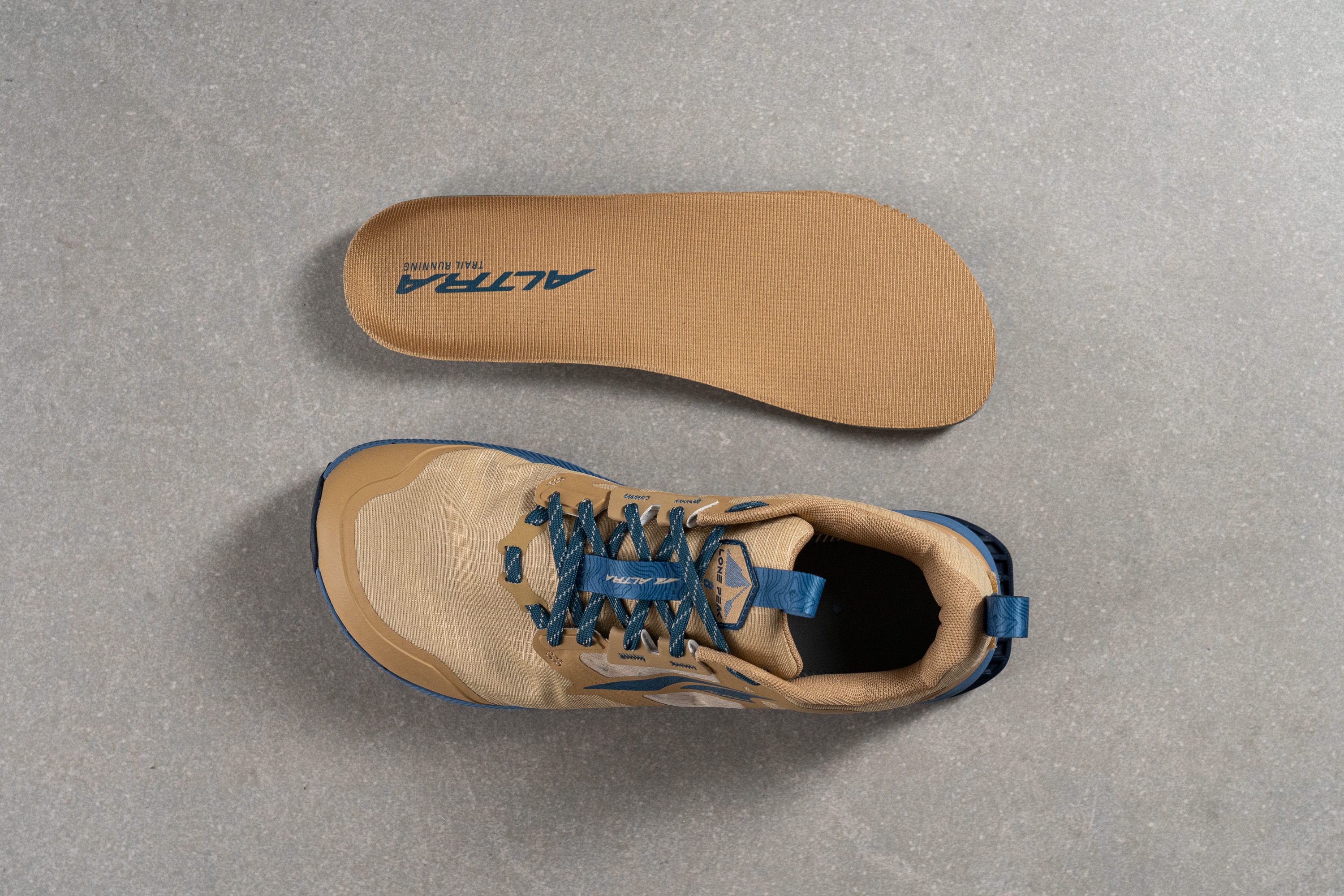
| Lone Peak 8 | Yes |
Midsole softness in cold (%)
To see how much firmer the midsole gets when exposed to cold conditions, we placed the Lone Peak 8 in our freezer for twenty minutes. Once appropriately chilled, we took another durometer reading of the midsole and found that it became 18.4% firmer. This change isn't as significant as the average trail shoe which tends to harden to a greater degree, meaning that the Lone Peak 8's cushioning should feel fairly consistent all year round.
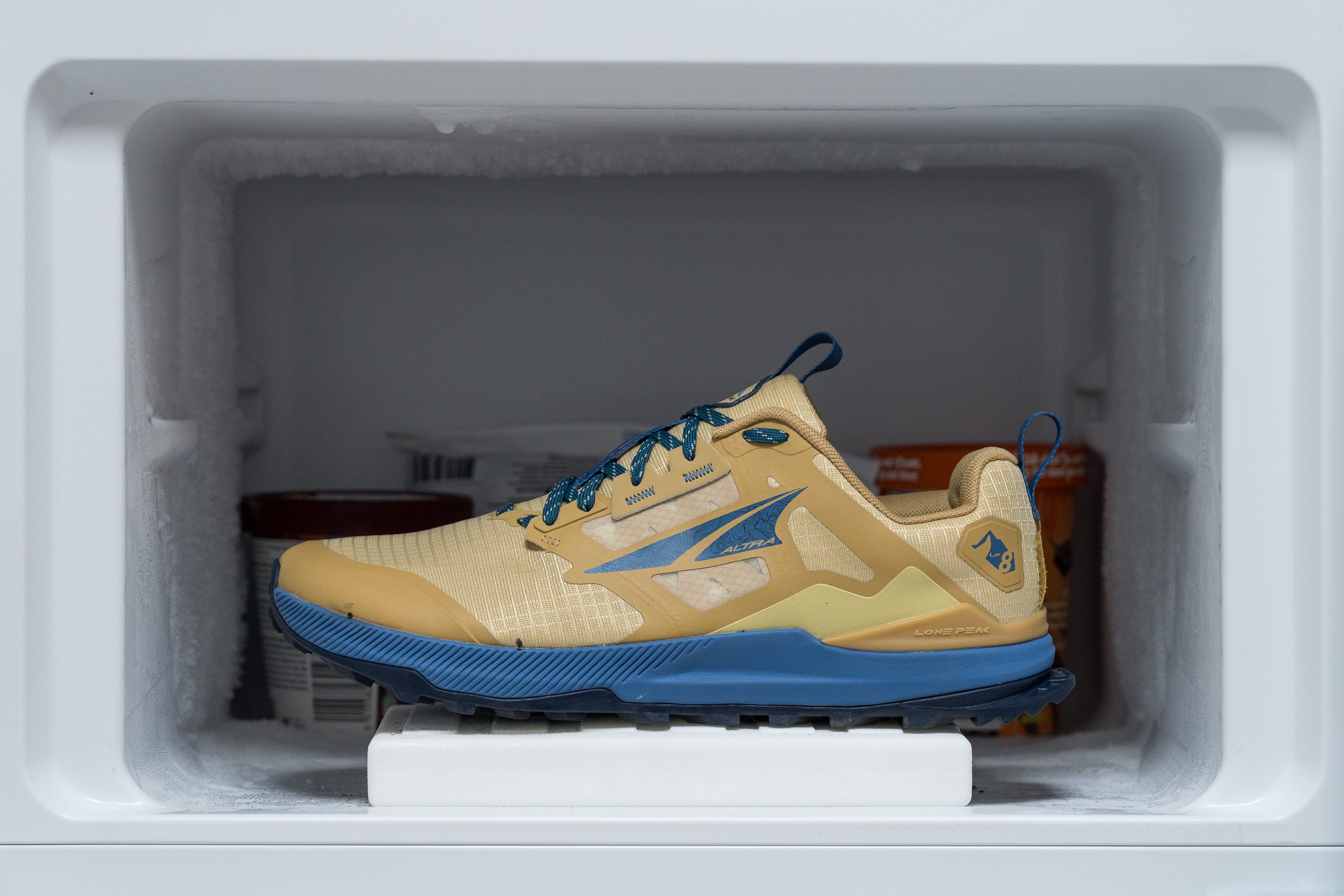
| Lone Peak 8 | 18% |
| Average | 26% |
Reflective elements
With no reflective elements incorporated into the Lone Peak 8's upper, we recommend exercising caution as well as using additional high-vis gear when running or hiking along dimly lit roads at night.
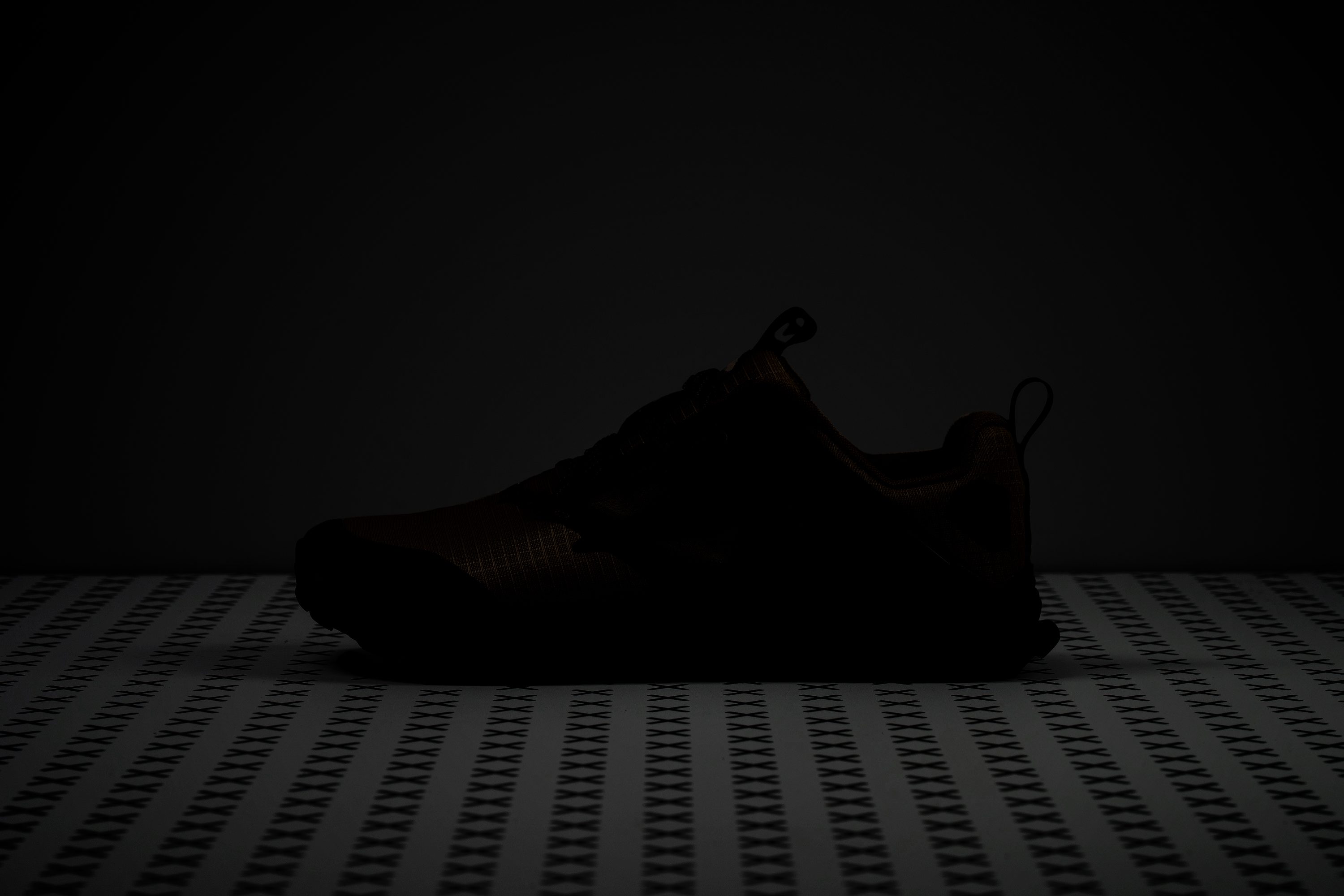
| Lone Peak 8 | No |
Tongue padding
Using our caliper, we measured the Lone Peak 8's tongue to be 9.7 mm thick making it quite a bit chunkier than average. This also helps with a secure and comfy midfoot lockdown while also giving us a nice buffer between our instep and the laces. As such, lace bite was the furthest thing from our mind while testing this shoe.
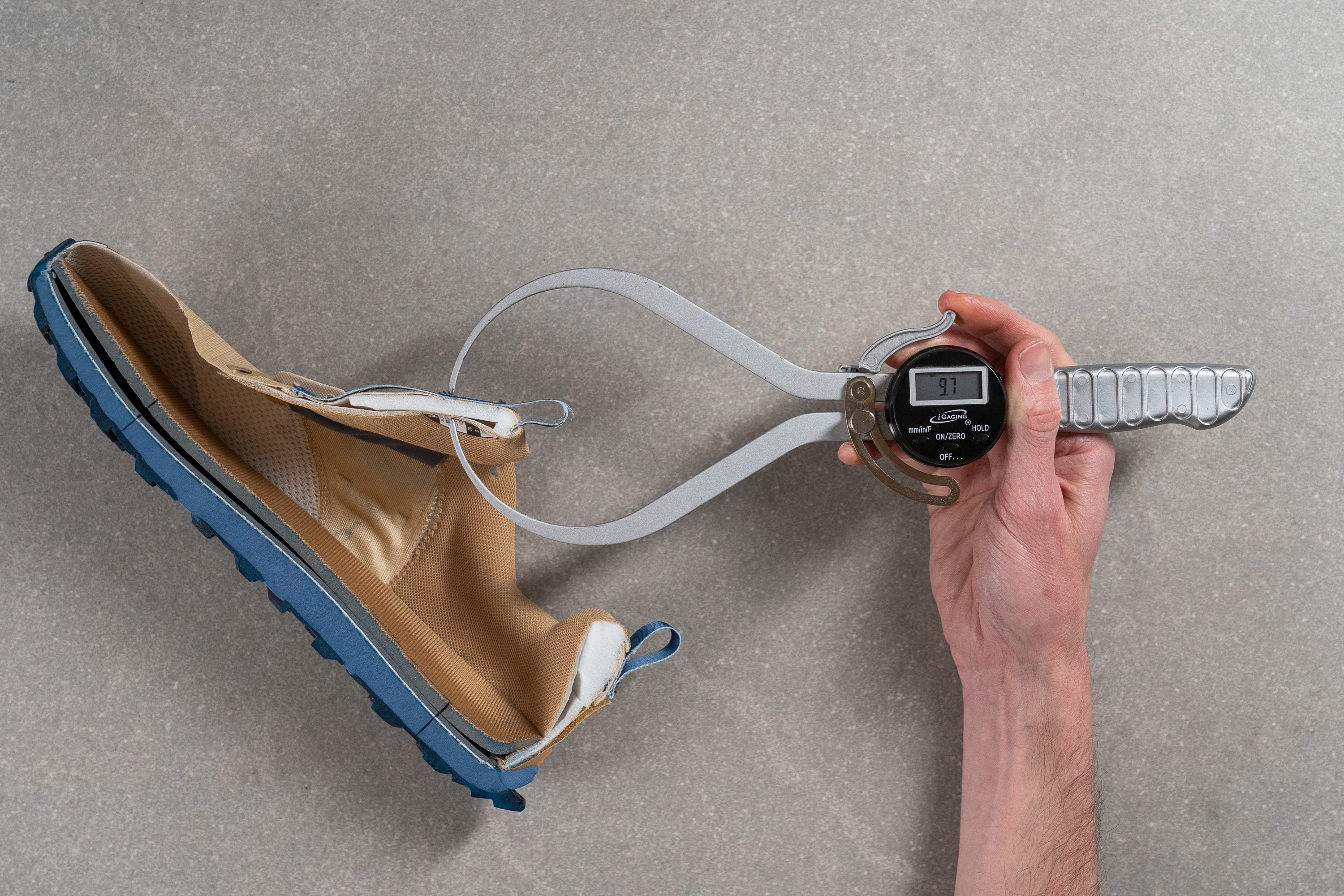
| Lone Peak 8 | 9.7 mm |
| Average | 6.4 mm |
Tongue: gusset type
The Lone Peak 8's tongue is fully gusseted on both sides. This improves our midfoot lockdown while also preventing any bits of grit or debris from making their way into the shoe and menacing our foot.
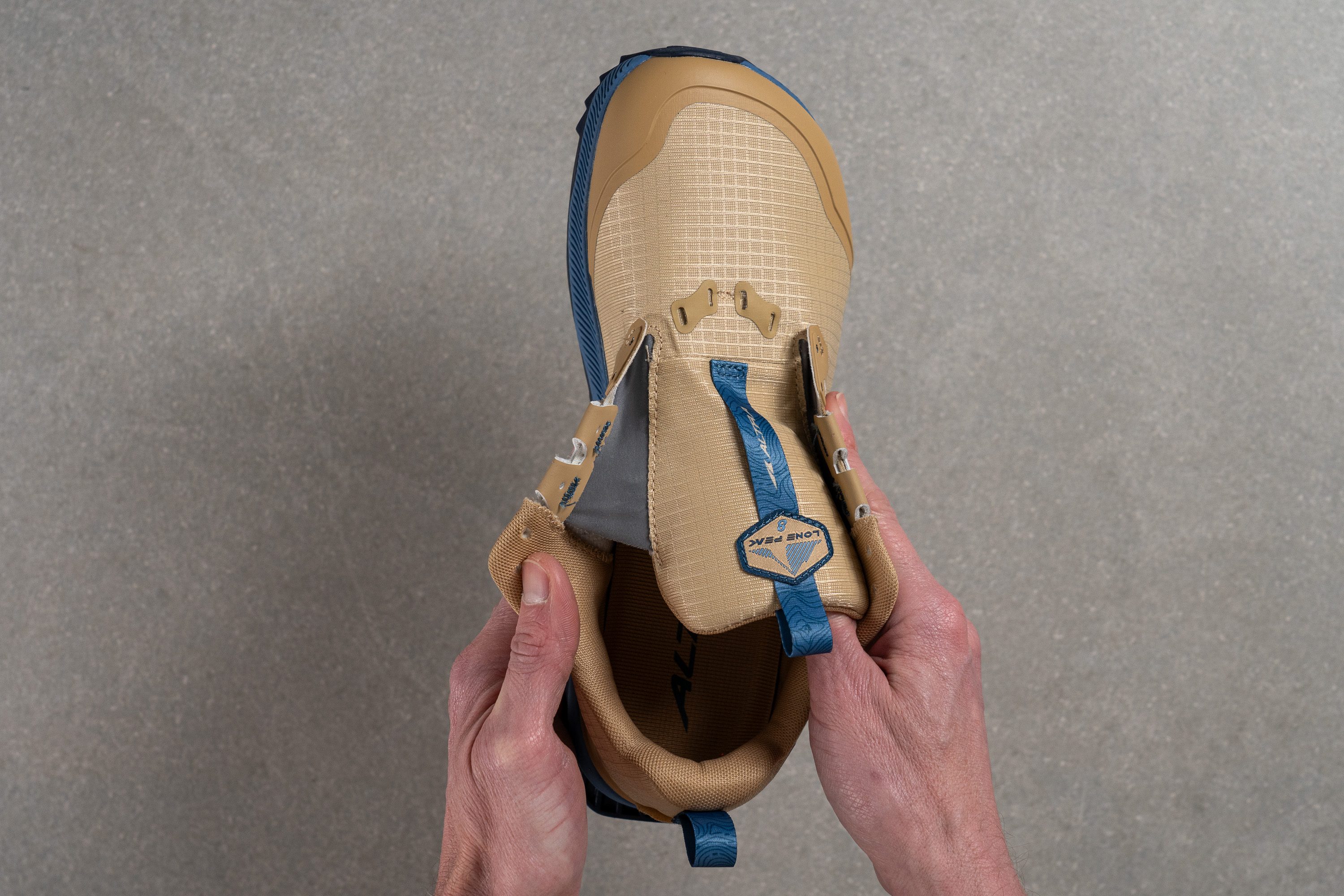
| Lone Peak 8 | Both sides (full) |
Heel tab
There's a handy little finger loop at the heel of the Lone Peak 8 that makes sliding the shoe on a breeze.
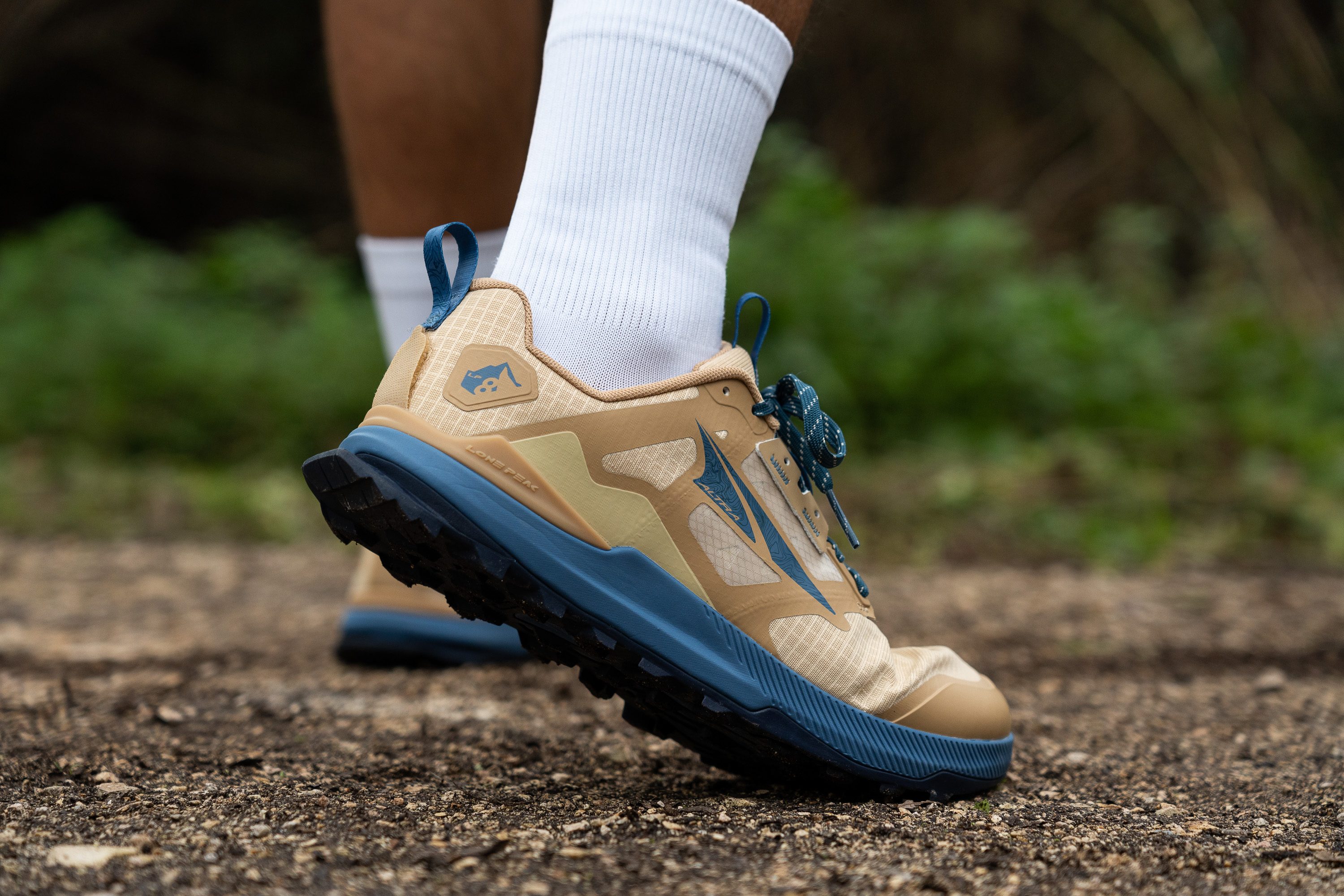
| Lone Peak 8 | Finger loop |

















































